I
It is difficult not to be moved to hum a Brahms lullaby or a Strauss waltz as you explore the sights of Austria's beautiful Baroque capital,
Vienna, which for centuries was the centre of the splendid Hapsburg Empire. The city remains infused with the grand imperial spirit in the form of magnificent palaces and grand mansions peppering the Innerestadt. The city's cultural heritage is mainly musical, the great composers like Strauss, Brahms, Beethoven, Schubert, Haydn and Mozart all having lived and performed here. Today the Vienna Philharmonic Orchestra and the State Opera House help keep alive the city's tradition by offering more classical music performances a year than any other city in the world.
Vienna is a city of music, but it is also synonymous with gourmet fare, cream cakes, superb coffee, the angelic strains of the Vienna Boys' Choir and the proud prancing of the Lippizaner stallions at the world-famous Spanish Riding School.
Vienna started out as a Celtic settlement on the banks of the Danube and became one of the Roman's most important central European bases. Its central location on the strategic river contributed to the city becoming a mighty empire, reaching its peak during the tumultuous reign of the dazzling Hapsburg dynasty. At the end of the 19th century the golden age of empire began to decline as Vienna's coffee houses filled with radical intellectuals like Freud, Klimt and Mahler. The Second World War Nazi occupation left scars, but Vienna survived it all to remain a captivating capital that blends Italian romanticism with a Germanic orderliness.
Most of the city's tourist attractions are within the largely pedestrianised inner city area, which was once enclosed by the city walls. The walls have been replaced with the Ringstrasse, a wide ring road. Further out in the suburbs is the thrilling Prater amusement park with its massive ferris wheel, and the opulent Schonbrunn summer palace. Visitors also should not miss a trip to the Vienna Woods, peppered with ancient 'heuringen' (wine taverns).
Attractions
The Hofburg Palace, or Imperial Palace, was the home of the Austrian Hapsburgs for 600 years. The first fortifications were erected by King Ottakar Premyst in the 13th century and were added to by every generation until it became the monumental structure it is today. As well as housing the president's offices, the palace now encompasses 22 separate museums, the National Library, a 14th-century Augustinian church, the famous Spanish Riding School and the Royal Chapel, where every Sunday the Vienna Boy's Choir sing Mass (they have performed for the Royal Court since 1498). It will be impossible to even catch a glimpse of everything on display at the Hofburg, so visitors should be selective. The most popular of the museums is the Kaiserappartements, which takes visitors on a tour of the Kaiser's imperial apartments, the Sisi Museum, and the Imperial Silver Collection.
| | 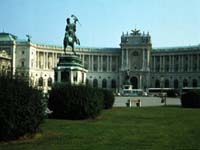 |
The Spanish Riding School of Vienna is the oldest and last riding school in the world where classic dressage is still practised in its purest form. This Institute was founded in 1572 and named for the Lipizzaner horses, which are of Spanish origin. The Imperial Court Stud was originally situated near the village of Lipizza (hence the name of the horses) but since the collapse of the Danube Monarchy in 1920 they have been bred at the Federal Stud in Styria. The horses perform their tricks in the Winter Riding School, which was commissioned by Emperor Karl VI. Performances take place between February and June, September and December but are in high demand and booked up months in advance (details on their website). The easiest way to see the horses is during their training sessions. Tickets are only available at the door, and cannot be booked in advance. Situated in the stables is the Lipizzaner Museum, which displays the history of the school.
| | 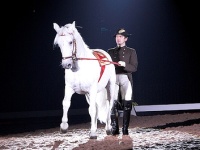 |
The magnificent Schönbrunn Palace was used as the summer residence of the Hapsburgs from the 18th century onwards. Set amongst superb gardens this vast, symmetrical structure is everything you would imagine an imperial palace to be. A tour of the palace offers visitors the chance to view the superb assortment of Baroque and Rococo State Rooms and to admire the famous ceiling frescoes of the Great Gallery and the Hall of Mirrors where Mozart once played. The vast gardens are popular with locals and tourists alike, and include a zoo, a maze and labyrinth, the Privy garden, and the Gloriette with viewing terrace. Also within the grounds, the Orangery plays host to classical concerts during the summer season.
| | 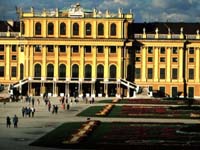 |
One of Vienna's most recognisable attractions, the Giant Wheel is located in a large wooded park and playground known as the Prater. It was built in 1897 by an English engineering firm and is the only one of its era still standing (the ferris wheels in Chicago, London, Blackpool and Paris have long since been destroyed). The wheel with its 15 gondolas takes twenty minutes to manoeuvre around and offers magnificent panoramic views of the city.
| | 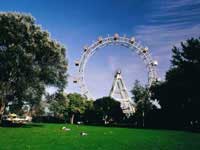 |
The Belvedere consists of two splendid rococo mansions, designed in the early 18th century, which face each other across formal, sloping grounds offering excellent views over the city. From the outside it is Vienna's finest palace complex, built by Prince Eugène of Savoy (1680-1735), the famous general who saved Vienna from the advance of the Ottoman Empire. The museums in the two palaces house some of Vienna's most renowned art galleries, offering excellent examples of Austrian art from the middle ages to present day. Their displays include an unrivalled collection of paintings by Klimt as well as famous works by Schiele and Kokoschka, Renoir and Monet. The Medieval and Baroque works are presented in the Lower Palace where many rooms have been preserved in their original state.
| | 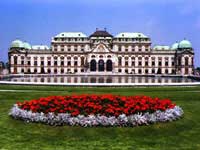 |
The Vienna State Opera performs a repertoire of near-one hundred operas, operettas and ballets every day from September to June. The opera house was founded in the early 18th century (it was rebuilt in 1955 after being all but destroyed in 1945) and makes for a romantic and regal setting in which to enjoy the performances. As seating tickets are not easily available, an alternative is to buy standing-room tickets, which are well priced and can be purchased on the same day (but expect long queues). The State Opera collaborates closely with the Vienna Philharmonic Orchestra, and their famous New Year concert requires advance bookings of up to one year.
| | 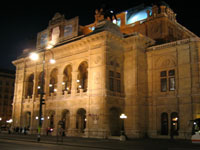 |
Karlskirche is the most outstanding Baroque church in the city and its 236-foot (72m) high dome flanked by two columns forms a dramatic landmark on the Viennese skyline. The church was commissioned by Emperor Charles VI after the Black Plague that swept Vienna in 1713 and is dedicated to the patron saint Charles Borromeo who was revered as a healer for plague sufferers. The lavishly decorated interior includes frescoes and visitors can get a closer look by taking the elevator to the roof.
Email: kontakt@karlskirche.at | | 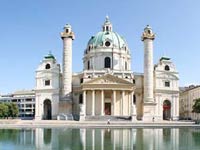 |
The Cathedral is one of the city's most recognisable symbols and the massive south tower standing at 445 feet (136m) tall is a dominant feature on the Vienna skyline. The 343 steps can be climbed for a fantastic view over the city. St Stephan's Cathedral is the most important religious building in the city and is one of the greatest Gothic structures in Europe, and has been in a state of continual preservation and repair since its original construction in the 12th century due to fire, city sieges and bombardment. The cathedral is built of limestone and has an ornately patterned and richly coloured roof covered by glazed tiles. The interior is rich in wood carvings, sculptures and paintings and has numerous chapels and altars, as well as the catacombs, which can be visited on a guided tour. Wolfgang Amadeus Mozart was married here, had children baptised here, and his funeral was held in the Chapel of the Cross.
| | 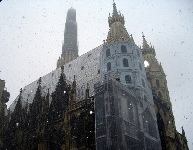 |
The former Hofburg residence today houses one of the largest and greatest graphic art collections in the world with drawings, old master prints and modern graphic works. The museum explores the development of graphic arts since the 14th century and there are over 60,000 works on show, including works by Leonardo da Vinci, Michaelangelo, Manet, Picasso and Cezanne. The Albertina is also one of the most beautiful examples of classical architecture in the world.
| | 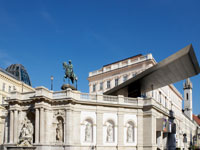 |
The Schatzkammer, located in the Hofburg Palace, houses the greatest treasury in the world spanning 1,000 years of treasures such as relics and vestments from the Austrian Empire and the Holy Roman Empire. Included in the collection are the crown jewels, particularly the priceless imperial crown, which dates from 962, and is studded with precious stones, as well as the Holy Lance was thought to be the lance that pierced Jesus' side while on the cross. Also housed is the Burgundian Treasure, and treasures connected to the Order of the Golden Fleece.
| | 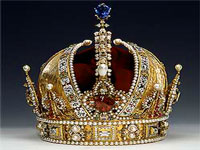 |
| Museum of Fine Arts (Kunsthistorisches Museum) |
The Fine Arts Museum across from the Hofburg Palace houses many of the art collections gathered by the Habsburgs and is one of the foremost museums of fine arts and decorative arts in the world. The magnificent building is crowned with a 197-foot (60m) high dome, while the inside is sumptuously decorated with marble, gold leaf and stucco ornaments, a fitting home to the formidable artistic treasures collected over the centuries. The collections range from Ancient Egyptian, Greek and Roman relics to medieval art, and Renaissance and Baroque paintings. The museum faces the Natural History Museum across the Maria-Theresian Platz, which has an identical exterior.
| | 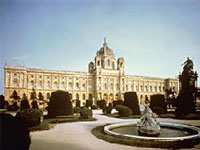 |
The House of Music is an interactive, high-tech discovery museum devoted to music and is located in the former Palais of Archduke Charles. Four floors take visitors past the music and memorabilia of the great composers who lived in Vienna, such as Mozart, Beethoven, Brahms and Schubert; discover the top musicians of today; and explore the future of music on computers. Conduct an orchestra, listen to what an unborn child hears in the womb or paint a musical picture. The museum was awarded top prize for its innovative design and allows visitors to experience music using the senses of sight, sound, touch and hearing.
| | 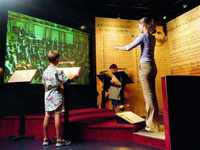 |
| Austrian National Library |
Situated in the Hofburg Palace, the royal library of the Habsburgs dates from the 14th century and is among the oldest and finest libraries in the world. The six million items stored in the library include papyri, manuscripts, ancient and rare books, maps, globes, portraits, music, photographs and graphics. The Grand Hall is a palatial room topped by a dome, designed in the Baroque style, and is decorated with statues and exquisite frescoes and is regarded as one of the most beautiful library rooms in the world.
| | 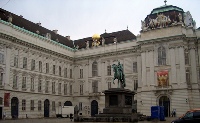 |
The impressive Natural History Museum is sited within a neo-Renaissance building that is identical from the outside to the Fine Arts Museum opposite. It is the third largest natural history museum in the world and has some of the oldest exhibits, including early Stone Age artefacts. Visitors can travel through the planet's history ranging from the diversity of nature to the origins of culture.
| | 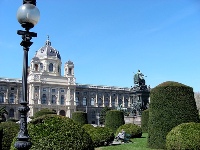 |
This large public park is a great place for families to enjoy a day in the sunshine. Stroll along the Hauptallee where chestnut trees line the way, or visit the Planetarium and the Prater Museum, both located inside the park. There is plenty of open space here for kids to run around.
| | 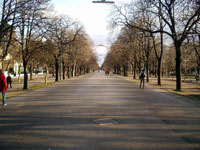 |
With beautiful tree-lined paths and exquisite scenery, the Vienna Woods are a fantastic place to go for a walk with the kids and get out into the great outdoors for some fresh air. The miles of open space is perfect for more active kids and walking or riding through this breathtaking scenery is a must for everyone.
| | 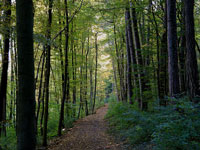 |
| Minopolis ? City of Children |
Minopolis is Europe's first theme park featuring a city that was specifically designed for children with buildings, doors, cars, etc reduced to children's size. Children can pretend to be adults and go about their daily life in the city if Minopolis working as whatever their hearts desire - a journalist, fire-fighter, policeman, doctor or dentist. Children can discover their dream jobs in a fun and safe environment. There are over 80 professions for children to try their hand at.
| | 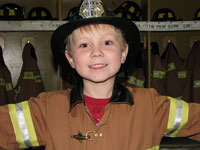 |
Boasting more than 3,500 animals, the House of the Sea (Haus des Meeres) features a terrarium where children can marvel at crocodiles and snakes, or for the more impressive creatures, the tropical seawater section features piranhas, sharks and sea turtles. The crocodile park is another attraction, while the tropical house features free-flying birds and monkeys who have free reign over everything.
| | 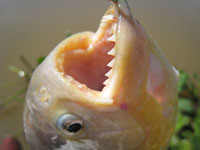 |
BOGI Park is Austria's largest indoor playground. Featuring a climbing volcano, quad train, a trampoline area, slides, ball pools and much more. Children will love exploring the magic cave and train rides as well as meeting other children. BOGI Park also features a restaurant where parents can unwind while the kids are at play.
| | 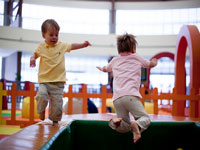 |
Events
| Donau (Danube) Island Festival |
Vienna - Donauinsel (Danube Island)
The Danube Island Festival has become one of the largest youth parties in Europe and attracts millions from around the world to take part in a weekend of free entertainment, music and dancing. Besides local bands and DJs there are world-famous international artists, and numerous open-air performances that take place on various stages around the island. Phone +43 (0)1 535 3535 or email office@donauinselfest.atfor more information.
24 - 26 June 2011
| | 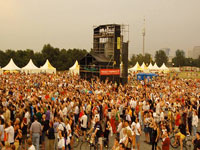 |
Vienna - Various
Vienna is the only city in the world where balls still dominate the social calendar during the winter season, and a Viennese ball is a unique opportunity to experience the sophisticated charm of the city and the famous Viennese waltz. The official ball season offers about 300 public balls for every taste and pocket, of which the most famous are the Opera Ball, the social elite highlight of the European ball season, the Philharmoniker Ball, and the glamorous Kaiserball (Imperial Ball) at the imperial Hofburg Palace, which is the traditional opener and is a glittering New Year's Eve celebration which attracts tourists and Viennese alike. The season officially lasts from New Year's Eve until Ash Wednesday the following year, but balls can occur up until June. Numerous rental services in the city specialise in ball gowns and formal wear. | | 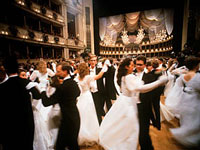 |
Vienna - Vienna Musikverein
Performed by the Vienna Philharmonic Orchestra, the annual New Year's Day concert is seen by millions of viewers worldwide and is a traditional start to the New Year. The orchestra is considered to be one of the finest in the world and this most famous of concerts features some of the most popular waltzes by the celebrated composer, Johann Strauss.
1 January 2012
| | 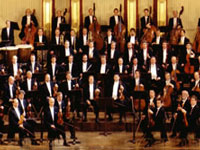 |
| Vienna Festival (Festwochen) |
Vienna - Various
One of Vienna's summer highlights, the Vienna Festival is a cultural spread of art, music, dance, theatre and opera performed by top international artists at main venues around the city. There are a huge variety of events, ranging from classical to modern, with shows, concerts and exhibitions for every taste. The annual International Music Festival coincides with the Vienna Festival, traditionally opened by the Vienna Philharmonic Orchestra.
13 May to 19 June 2011
| | 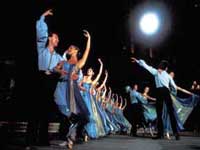 |
Vienna - Prater
The annual Skate Marathon is a great way to combine sightseeing with exercise and comprises a 26-mile (42km) skate race, as well as a 13-mile (21km) and six-mile (10km) run. There are open-air concerts in Prater Park to entertain participants and spectators.
24 - 28 June 2011 | | 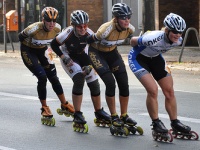 |
























No comments:
Post a Comment